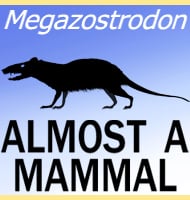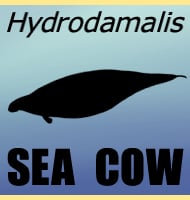In Depth
One of the biggest fields of study regarding Torvosaurus is its supposed size and possible claim to being the largest known Jurassic era theropod dinosaur. Though known from only partial remains, fossils from the Morrison Formation have been compared to other better preserved theropod genera of the time to yield estimates of around nine meters long. However further fossil material, namely a maxilla (upper jaw bone) has been found to be larger than equivalent remains in North America, and when the North American remains are scaled up for comparison a new estimate of up to eleven meters long come to light. If eleven meters is correct then Torvosaurus would certainly be one of the largest predators in North America during the Jurassic, and be even larger than the smaller estimate for Saurophaganax (a theropod estimated between ten and thirteen meters long).
Because of its potential large size, Torvosaurus has been speculated by some to have been a scavenger that used its larger size to intimidate and scare off smaller theropods such as Marshosaurus, Ceratosaurus and even Allosaurus from their kills. However this large size would have given Torvosaurus an advantage in dealing with larger prey types that would have been too slow to run away even from a theropod the size of Torvosaurus. Potential prey for Torvosaurus could have included ornithopods like Camptosaurus and plated dinosaurs like Stegosaurus. Sauropods such as Diplodocus, Apatosaurus, Brachiosaurus and Camarasaurus are also known to have been quite numerous, and smaller juveniles of these genera in particular would have been vulnerable to predators such as Torvosaurus.
Another large theropod called Edmarka is known to have stalked North America during the Jurassic, though there is speculation that Edmarka might actually be the same dinosaur as Torvosaurus, an idea that has increased in popularity in recent years.Torvosaurus gurneyi
Back in the year 2000, new theropod material was recovered from Portugal, and in a subsequent description Oct�vio Mateus and Miguel Telles Antunes assigned these fossils as Torvosaurus sp. Later in 2006, the fossils from the Lourinh� Formation were assigned to the Torvosaurus type species T. tanneri. By 2012 another study by Carrano et al went to the point that the Torvosaurus fossils could be defined further than just a generic species, and in 2013 eggs with fossilised embryos inside them were assigned to Torvosaurus. Finally in 2014 description by Hendrickx and Mateus the Portuguese fossils were recognised as a species entirely separate from the type species which today is only known from North America. The Portuguese Torvosaurus are now credited as belonging to Torvosaurus gurneyi, a species named in honour of James Gurney, who is best known for his work creating the Dinotopia series of illustrated books.
It might seem strange that two species of the same dinosaur could co-exist upon what are now separate continents, but it is important to remember that in the late Jurassic North America and Europe were closer and still connected and that land animals could literally walk between the two. Torvosaurus is also not the only one either, with species of other dinosaur genera which are often described as North American such as Allosaurus, Ceratosaurus and Stegosaurus also being known from the Portuguese Lourinh� Formation. In fact many researchers often point out that in terms of the types of animals, the Lourinh� Formation is analogous to the famous Morrison Formation of the United States. Other dinosaur genera that Torvosaurus gurneyi may have come into contact with include the stegosaurs Miragaia and Dacentrurus, the sauropods Lusotitan and Lourinhasaurus, the theropod Lourinhanosaurus, as well as ornithopods and possibly even ankylosaurs.
Torvosaurus gurneyi was initially described as being about eleven meters long, but revisions to this estimate have already been made which has seen estimates reduced to around the ten meter mark. This would still make Torvosaurus gurneyi one of the largest theropod dinosaurs known to have lived in Europe, and still larger than many of the earlier European theropods such as Megalosaurus, Dubreuillosaurus and Poekilopleuron and Magnosaurus.
Further Reading
– A new large theropod dinosaur from the Upper Jurassic of Colorado. Brigham Young University Geology Studies 26(1):1-12 – P. M. Galton & J. A. Jenson – 1979. – Theropods of Dry Mesa Quarry (Morrison Formation, Late Jurassic), Colorado, with emphasis on the osteology of Torvosaurus tanneri – Brigham Young University Geology Studies 37: 1-72 – B. Britt – 1991. – Edmarka rex, a new, gigantic theropod dinosaur from the middle Morrison Formation, Late Jurassic of the Como Bluff outcrop region – Hunteria, 2(9): 1–24 – R. T. Bakker, J. Siegwarth, D. Kralis & J. Filla – 1992. – Torvosaurus sp.(Dinosauria: Theropoda) in the late Jurassic of Portugal. – In I Congresso Ib�rico de Paleontologia/XVI Jornadas de la Sociedad Espa�ola de Paleontolog�a (pp. 115-117) – O. Mateus & M. T. Antunes – 2000. – The large theropod fauna of the Lourinha Formation (Portugal) and its similarity to that of the Morrison Formation, with a description of a new species of Allosaurus – New Mexico Museum of Natural History and Science Bulletin, 36. – O. Mateus, A. Walen & M. T. Antunes – 2006. – Late Jurassic Dinosaurs From The Morrison Formation (USA), The Lourinh� amd Alcobaca Formations (Portugal), and the Tebdaguru Beds (Tanzania): A Comparison – Octavio Mateus – In Paleontology and Geology of the Upper Jurassic Morrison Formation. New Mexico Museum of Natural History and Science Bulletin 36. – J. R.Foster, & S. G. R. M. Lucas, eds. – 2006. – The phylogeny of Tetanurae (Dinosauria: Theropoda)”. Journal of Systematic Palaeontology 10 (2): 211–300. – M. T. Carrano, R. B. J. Benson & S. D. Sampson – 2012. – Filling the gaps of dinosaur eggshell phylogeny: Late Jurassic Theropod clutch with embryos from Portugal. – Scientific Reports 3 : Article number: 1924 doi:10.1038/srep01924 – Ricardo Ara�jo, Rui Castanhinha, Rui M. S. Martins, Oct�vio Mateus, Christophe Hendrickx, F. Beckmann, N. Schell & L. C. Alves – 2013. – Torvosaurus gurneyi n. sp., the Largest Terrestrial Predator from Europe, and a Proposed Terminology of the Maxilla Anatomy in Nonavian Theropods – PLoS ONE 9 (3): e88905. – C. Hendrickx & O. V. Mateus – 2014.











